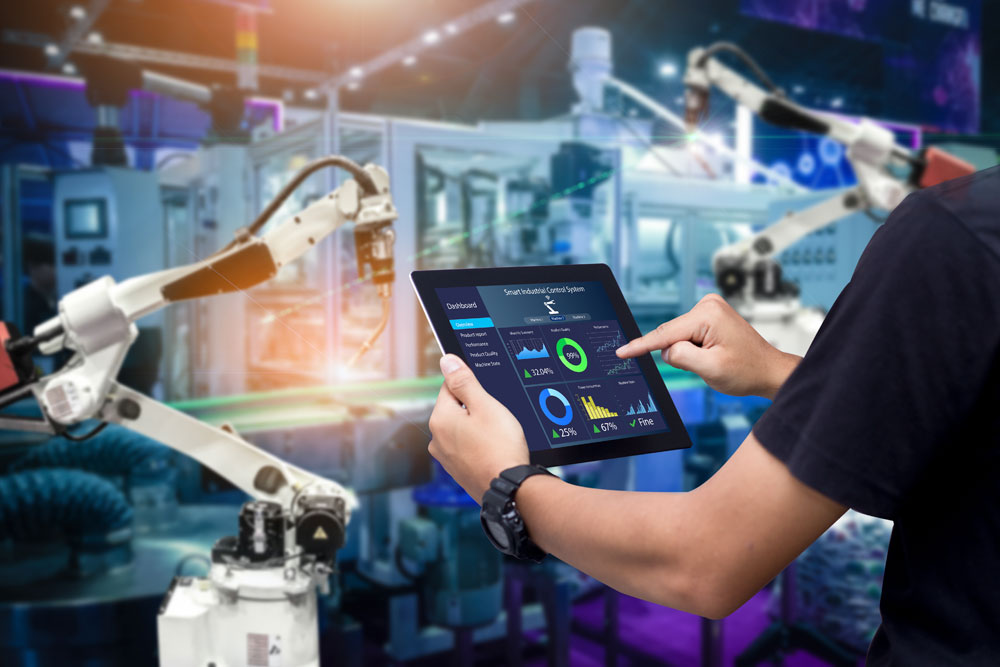Solving Real-World Problems Safely

Across industries, designers and engineers are constantly undertaking hypothesis testing. They are on a never-ending expedition to find out what design will look right and fit the need of the hour. Testing and iterating are the essence of research and development. Major companies spend billions of dollars every year on their R&D efforts.
As per a study conducted by NITI Aayog and Institute for Competitiveness, India’s spending on R&D is among the lowest in the world, and to achieve the goal of a US$5 trillion economy, the gross domestic expenditure on R&D (GERD) needs to advance. Although still low, India’s GERD has tripled between 2008 and 2018, from `39,437.77 crore in 2007-08 to `1,13,825.03 crore in 2017-18. The growth is apparent, and GERD in the country has been consistently increasing over the years. All the governmental efforts towards ‘Make in India’ seem to be slowly bearing fruit.
India and R&D
Things are certainly looking up, and India even attracted US$343.64 million in foreign direct investment equity inflow into R&D in 2021, a jump of 516 percent YoY. According to NASSCOM, India’s share in the global engineering and R&D market is projected to grow at a CAGR of 12-13 percent to reach US$63 billion by 2025, up from US$31 billion in 2019. India’s current share of the GERD outsourcing market is 30 percent, and the country aspires to reach 50 percent within a decade.
Our Engineering R&D scene comprises Global Capability Centers (GCCs), Engineering Service Providers (ESPs), Startups, and India-based manufacturing companies. India-based GCCs and ESPs have extended their space to assume end-to-end ownership of global products. They are playing a vital role in planning the enterprise-wide digital transformation tactic. Furthermore, India-based GCCs and ESPs also support customized localization to unlock new market segments for global enterprises and build products that are ‘Made for India’ and for the world. At present, India is second among the countries with the largest increase in contributions made to high-quality scientific research. With its fast-paced innovation drive, India is poised to emerge as the most sought-after destination for scientific research.
Increase in R&D spending in the Automobile industry
Currently, the Automobile industry is undergoing its biggest disruption, thanks to revolutions like electrification, connectivity, autonomous driving, and carbon neutrality. It has prompted an all-new battle among manufacturers who have no choice but to adapt to dodge obsolescence while they are competing in the market.
There are numerous factors that have driven the increase in R&D spending in the mobility industry. In the commercial vehicle space, more than half the R&D spend is happening either on emission compliance or hybrid and electrification (EV) trends. In the last few years, original equipment manufacturers have spent heavily on ensuring BS-VI compliance. Now, the bulk of the R&D investment is going toward EV technology.
Simulation-driven product development
Typical V-Cycle of development for vehicles comprises Requirement & Specifications, System & Subsystem Design, Component Design & Optimization, Component Integration, and System Verification & Validation. Traditionally, engineering simulation was used for component design and optimization. With the recent advancements in simulation technologies, simulation can be used at all stages of the product development cycle.
For smart product development and testing, physics-based engineering simulation is a must. With this, there is no need to build an actual prototype. Engineers can predict what will happen and why it will happen with the help of physics-based modeling and simulation tools. This helps vehicle engineers make better decisions and make the ‘first time right’ design, thus saving both time and cost.
According to NASSCOM, India’s share in the global engineering and R&D market is projected to grow at a CAGR of 12-13 percent to reach US$63 billion by 2025, up from US$31 billion in 2019.
Next-generation simulation for future mobility
By 2030, EVs will secure approximately 32 percent of the total market share for new vehicle sales, and 45 percent of the vehicles sold will be highly automated, according to experts. In the future, EVs and autonomous vehicles will bring many advantages, such as lower emissions and traffic reduction. However, there are major barriers that must be overcome before we get there. Engineers must deliver more complex vehicles while limiting cost and maximizing safety and performance. Today’s vehicles are highly multifaceted systems that must meet regularly evolving safety and regulatory standards set by regulatory bodies and governments.
Thus, we are also in the middle of the biggest technological transformation that history has ever seen, where there is the convergence of multiple technologies and megatrends revolutionizing the Automotive industry. How will we deliver this transformative mobility and transportation experience? There is an urgent need to innovate at an exponential rate to invent disruptive technologies and get them to market faster than ever before. Simulation tools offer a streamlined approach to designing and validating these vehicles in a fast and reliable way. It can allow the Automotive industry to achieve 1000x faster innovation while improving safety and performance.
To be competitive in the market, the future of mobility demands much more advanced levels of quality, reliability, and durability while being scalable and cost-effective. Engineering simulations help engineers in their innovation journey, reduce the cost factor, and solve multiple design issues in the shortest possible time.

Detailed Vehicle Engineering using simulations
Better and safer vehicles can be built using simulation-led design in different aspects of the vehicle. Integrated multi-domain and multiphysics simulations can be used in multiple areas.
In Vehicle Chassis: From the suspension to the steering for Chassis Structural, Passenger Safety, Painting, Brakes, Suspension & Steering, and Wheels/Tires.
In Vehicle Powertrain: From the cylinder to the systems for the Internal Combustion Engines, Transmission, Fuel Systems, Exhaust Systems with Emissions Control, and Electric Powertrains.
In Vehicle Electricals: From antennas to ADAS for Wiring and Connectors, Infotainment, ADAS Systems, Sensors, and Antennas.
In Vehicle Exterior: From the cylinder to the system for External Aerodynamics, Aeroacoustics, Thermal Management, Water Management, and Soiling and Structural Integrity.
In Vehicle Interior: From the seat to the sound for Climate Control/HVAC, Cabin Acoustics, Crash and Safety, and Ergonomics/HMI/HUD.
For Electric Vehicles, simulation solutions allow rapid electric and hybrid vehicle innovation at both the component and system levels. Key applications comprise batteries and battery management systems, fuel cells, power electronics, electric motors, and the integrated electrified powertrain system.
Simulation capabilities are tailored to the detailed engineering needs of vehicle technology in Vehicle Engineering. These solutions aid the simulation of vehicle systems expansively with fully integrated structural, crash, fluids, thermal, electromagnetics, electronics, semiconductors, software, and system simulation tools.
Simulation solutions are bringing next-gen innovation to vehicle design as they can be used right from the concept stage of product development up to the testing and trial stage. It helps reduce prototypes during development as well as the development cost and time.
Safety analysis and embedded software solutions are developed specifically to meet the requirements and standards of the automotive industry, such as ISO 26262 and AUTOSAR, to ensure Safety Engineering. This enables engineers to meet industry-required safety standards at a dramatically lower cost and at twice the speed of more manual or traditional approaches.
When it comes to ADAS and Autonomous Vehicles, backing up the safety by design and safety by validation approach, broad and deep capabilities are provided for simulating autonomous vehicles and advanced driver assistance systems. The software can be leveraged for high-fidelity, physics-based sensor modeling in ISO 26262 and AUTOSAR-compliant embedded software and human-machine interface development.
Role of digital twins in Automotive Vehicle Design
Today, it is common for engineering teams to create a digital twin of a product or system to design, simulate, and verify its behavior and performance in the real world to find weaknesses, failure points, and limitations before manufacturing. This increases the quality, safety, and durability of the physical product. If we follow the analogy of taking 30 linear steps between each design cycle of the digital twin, we will only innovate in a linear manner and take much more time to optimize the product. We also run the danger of not testing and optimizing all the possible scenarios and boundary conditions.
For developing electric and autonomous vehicles, nearly 8 billion miles of road testing and safety engineering are required to ensure the delivery of safe, reliable, durable, and high-quality products at scale and a lower cost. So, linear innovation technologies and processes cannot deliver the future of transportation and mobility. Compounding improvements between each design and optimization cycle of the digital twin is critical. Leveraging the right digital transformation technologies and implementing the optimal processes on the digital twin of a product or system to achieve exponential innovation is critical to developing electric and autonomous vehicles.
To conclude
The latest and greatest automotive electronics providing enhanced safety, convenience, and entertainment is what is being sought today. Automakers will have to add these features without adding weight to vehicles, which means that there is a persistent push to make electronic components and packages smaller while increasing performance. What’s more, all this must be solved in record time to remain competitive in the market. Simulation cuts the expensive test-fail-fix-repeat cycle, which fast-tracks product qualification while plummeting manufacturing risks. By integrating reliability physics/physics of failure (PoF) early in the product design and development cycle, simulation thus helps automakers bring new technologies to market faster.
Thus, simulation solutions are bringing next-generation innovation to vehicle design, as they can be used right from the concept stage of product development up to the testing and trial stage. Simulation helps in the reduction of prototypes during development as well as the development cost and time for manufacturers.

DILIPKUMAR DAMERA
Application Engineering Manager - Presales
Ansys India
dilipkumar.damera@ansys.com




 Facebook
Facebook.png) Twitter
Twitter Linkedin
Linkedin Subscribe
Subscribe